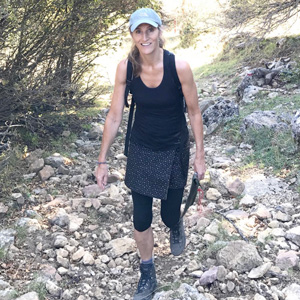With a pretty fresco-painted church on an island in the middle of a lake and an imposing castle as a backdrop, it is little wonder that the majority of Slovenia’s tourists head straight to the shores of Lake Bled before venturing to other regions. Take a pletnja (guided rowing boat) out to the island and you can treat yourself to a traditional Bled Cream Cake, the local delicacy of a large cream and custard topped filo pastry cake. Don’t miss a visit to Bled Castle for a wander around this impressive structure and some outstanding views of the lake and surrounding countryside. Children will love the tree top adventure and other activities at the Straza Adventure Park.

Lake Bled may be where the tourists congregate but Lake Bohinj, Slovenia’s largest glacial lake, is the secret stunner for those who like to escape the crowds. Grega, our encyclopaedic guide, stopped the bus in Ribcev Laz to point out the beautifully situated church of St John the Baptist on the edge of Lake Bohinj. No activity on the lake meant that the glass-like watery surface provided a perfect reflection of the steep-sided and craggy wooded hills on either side - clouds obscuring their summits. No lakeside structures tarnished this pristine view. A small group of rowers were preparing to launch their boats for a training session on the lake, around which a gentle trail provides easier walking and cycling options than the steeper hills above.

We took a cable car a very speedy 1,535 metres up to the Vogel ski hotel and resort. It was as if we had entered a different world, breaking through the blanket of clouds above the lake and suddenly being surrounded by high snowy peaks with skiers making the most of the end of the season slopes to enjoy the country’s national sport. The pyramid peak of Slovenia’s highest mountain, Triglav (2,864 metres), could be seen in full glory across the lake. At the end of the ski season hiking trails are in abundance in the Julian Alps and cater for families on mini day hikes through to challenging hut-to-hut multi-day treks.

The Slovenians are a nation of outdoor lovers, and with countryside as beautiful and varied as theirs it is little wonder. Next stop the Soča Valley, home to some outstanding trekking and water-based activities, with the town of Bovec at its heart. Kayaking, canyoning and white-water adventures on the emerald-coloured Soča River draw adventurers from far and wide and pretty campsites nestle between woods and meadows. Try to spot or perhaps taste some of the river’s marbled trout which is unique to this area.

Snow was still in patches on the ground on a visit to the pretty town of Kranjska Gora, close to the Austrian and Italian borders in the north. The town is a busy ski resort in the winter and plays host annually to downhill ski competitions and the world’s top ski jumpers as they hone their skills on the 1,178 metre high Planica ski jump: one of only five concrete flying hills in the world. Whether winter or summer, take the nearby chairlift to the top of the jump and imagine yourself hurtling down the run at speeds of up to 105 kilometres per hour! Don’t worry – the return journey is by chairlift! A visit to the nearby modern museum and sports facility offers the safer option of trying the simulated ski jump. You can also try out an indoor simulated free fall experience if you fancy.

For those who like to keep their feet planted firmly on terra firma whilst enjoying some of the delicious wines and fruits which are produced there, then a visit to the rolling hills of the Brda region is a must, and the place to start is the delightfully picturesque town of Šmartno, home to just a few dozen residents but also a thriving artisan culture and growing wine safari tours. The Julian Alps to the north of Brda protect this region (which is visually comparable to the landscape of Tuscany in Italy) from the cold northerly winds, creating a microclimate which is perfect for growing grapes and cherries. In fact, the region boasts an average of 300 sunny days each year and hosts a Festival of Cherries in June, where over 50 varieties can be sampled. Being on the edge of the Italian border also offers a great choice of menus for different tastes, with locally produced cheeses and cured meats of Slovenia merging with the seafood and Italian influences from coastal Trieste and beyond.

This visit provided a short and very sweet insight into Slovenia’s regions adjacent to the Julian Alps. The capital city of Ljubljana is certainly worth a visit, not to mention the jaw-droppingly beautiful caves at Postojna and then of course there’s the bear and wildlife-watching…the list goes on. Direct low-cost flights make Slovenia a very affordable and attractive option for both hikers and families.
Whether you want to join a group departure or arrange a tailored private trip, contact us to plan your family holiday to Slovenia.












